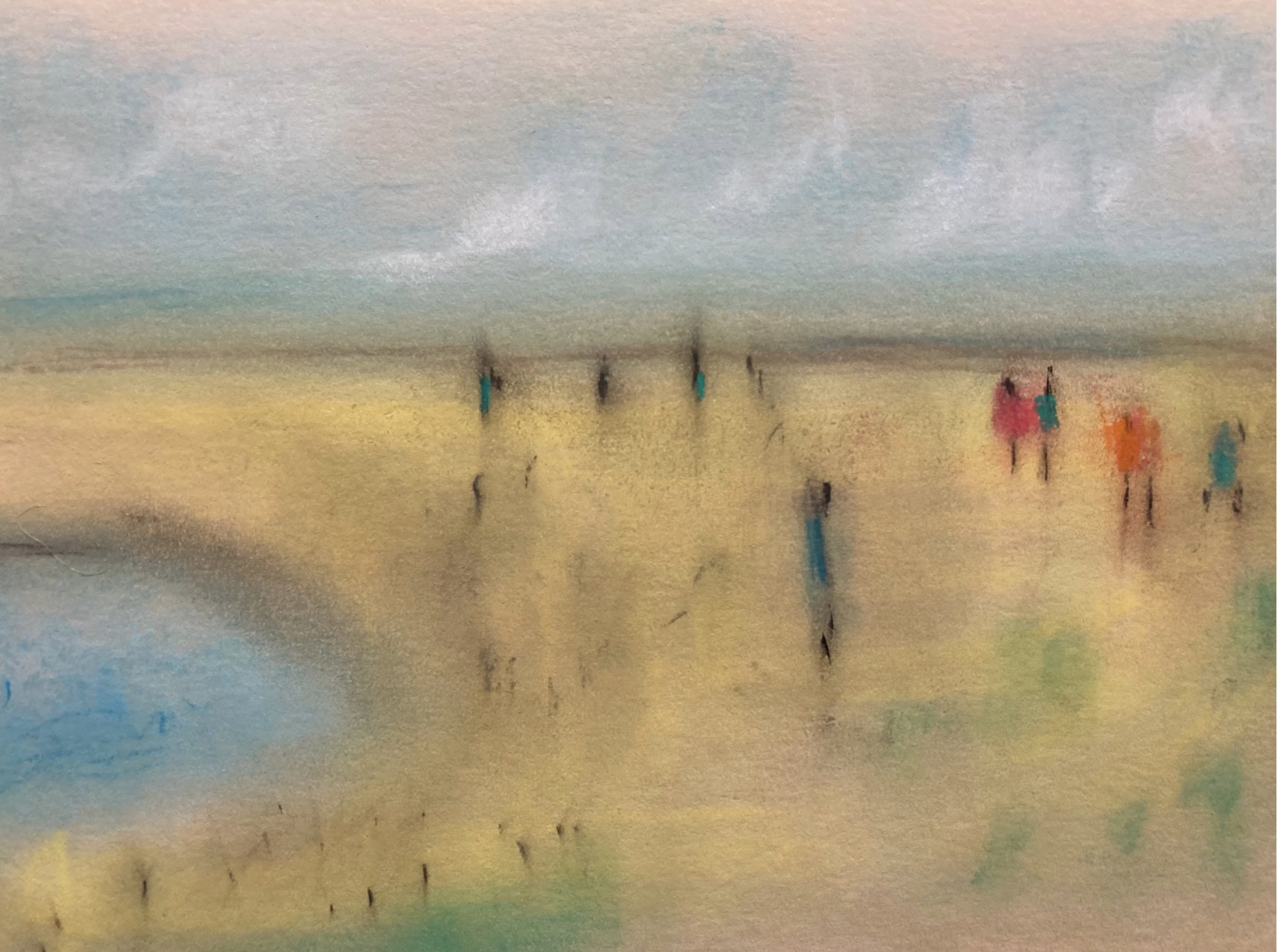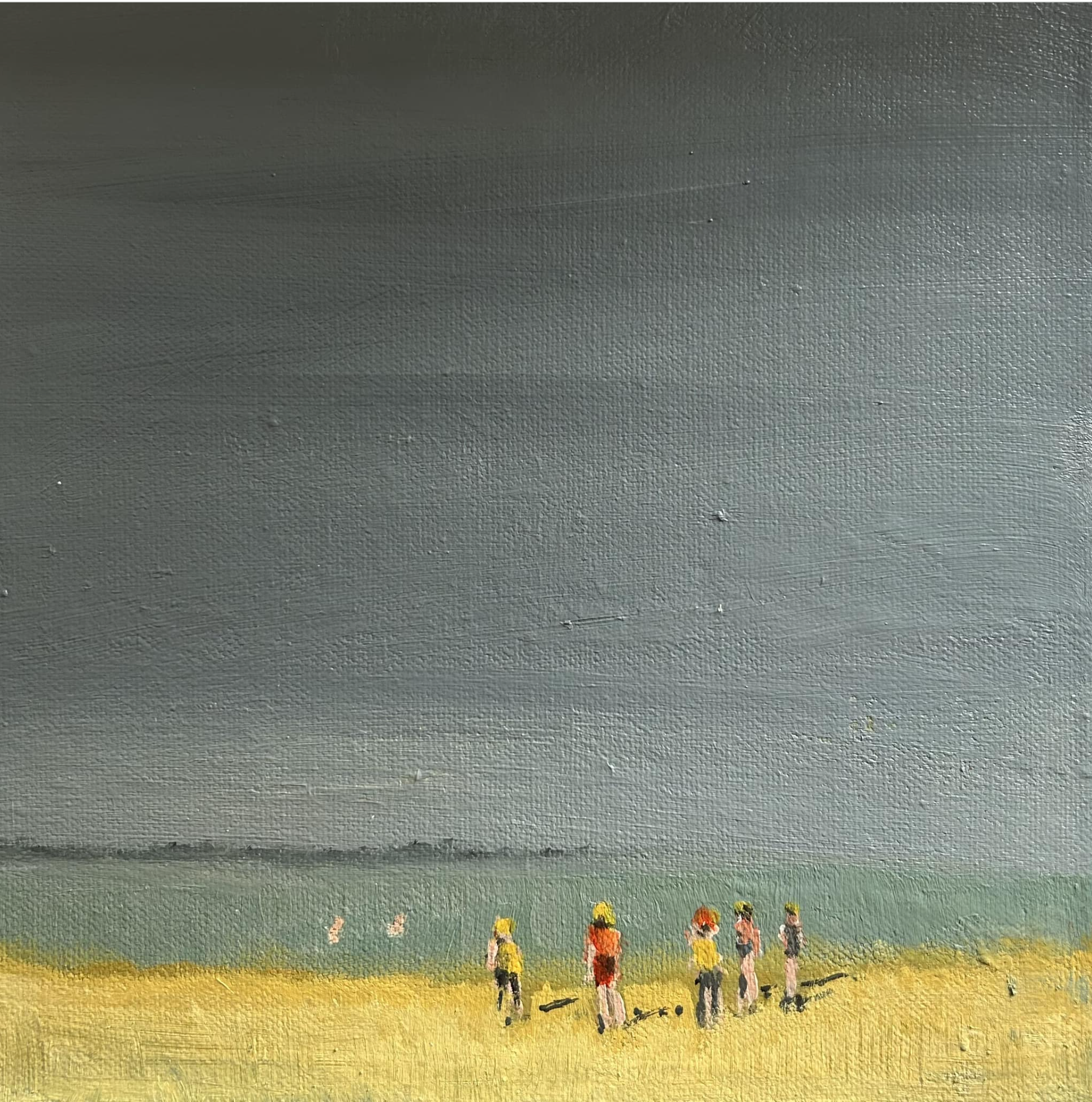Nick Kelly
My first love is Turner. I can spend hours at Tate Britain gazing at the late Turners. Some of my favourites are the watercolours he made in Venice. He captures the light in the lagoon perfectly - all in a simple wash of pure colour and few brush strokes to indicate a campinale or duomo emerging in the mist. I’ve always loved the Impressionists - Monet, Cezanne, Degas, but most of all Matisse.
I was born in Whitstable, Kent in 1951. After a few enjoyable years travelling, I trained as a teacher, specialising in Drama and Media. Working as a volunteer teacher in Egypt with VSO in 1975, I began my love of Arabic and the Middle East. I took up a post in Qatar in 1977 where I continued to live for twenty-three years. In 2000 I came back to the UK and worked as a freelance newsreader with the BBC World Service. I now work at home in Whitstable, devoting my time to painting and writing. Single Man Dancing Alone is my second book, the sequel to The House of Fortune.
My paintings are mainly concerned with the coast. Having grown up by the sea in Whitstable, I find the sea a constant source of inspiration for my paintings. Over the last twenty years I have produced work that is both figurative and more impressionistic. Many of my larger canvases are towards the abstract. Very often I sketch by the sea and then when I'm back in the studio my imagination runs riot.
Lately I've been working on a series of pen and watercolour sketches from my walks around the Kent coast from the Isle of Sheppey to the border of Kent and East Sussex at Dungeness. I find myself drawn to the emptiness of deserted beaches, probably due to my earlier career in the Middle East and its vast deserts. Previously painting empty landscapes but now I include figures, perhaps only just one. I like exploring the relationship of the land and humanity from a single walker alone with his thoughts, to the mass gatherings of beach lovers at Margate and Broadstairs. It's all fascinating. Nick’s Instagram is here.
We are delighted to have Nick as part of our Contemporary Kent Artists exhibition at The Horsebridge Arts Gallery on the 8th - 20th of October 2025.
How do you feel your art has changed or progressed in the last few years?
My work was mostly about large open spaces - sea, sand, sky. I hardly ever included figures. However, I somehow felt the need to include people - their relationship with the surrounding landscape. This became more my style as I moved back to Whitstable. My paintings from then on included swimmers and paddlers, strollers and hikers. One of my pleasures is sitting in street cafes observing people and capturing them on paper. Perhaps the main thing that has changed over the years is a move towards larger pieces that attempt convey an emotion - moody skies, lonely figures.
Do other painters and the techniques they use inspire your work, who has been an influence to you? Who are your biggest artistic influences?
I’m definitely inspired by many artists. My first love is Turner. I can spend hours at Tate Britain gazing at the late Turners. Some of my favourites are the watercolours he made in Venice. He captures the light in the lagoon perfectly - all in a simple wash of pure colour and few brush strokes to indicate a campinale or duomo emerging in the mist. I’ve always loved the Impressionists - Monet, Cezanne, Degas, but most of all Matisse. I love the reds and blues he uses. I would love to paint more in those colours but somehow I revert to more pastel tones. I’m very fond of the St. Ives artists. The whole story of how they gathered in Cornwall always fascinates me. Ben Nicholson, Christopher Wood, and later Patrick Heron and Peter Lanyon with the extraordinary glider paintings. I can easily spend a week wandering around St. Ives and along the south west coast path in the bleakness of January, knowing that so much wonderful creativity happened there.
- Your book “Slow Lane to Dungeness” is a walking journey along the Kent Coast, illustrated with your work. What were some of the most memorable parts of the experience of doing this?
Slow Lane to Dungeness was a very rewarding experience. I wanted to get my thoughts down on paper and collect together the work that I had done over the past five years or so. The most memorable moments were really towards the beginning and end of the walk. I hadn’t really spent much time on Sheppey before and as I walked around the entire coast I grew more fond of it. At one point in Leysdown, having spent the day sketching in the remoteness of Shellness, I waited for the bus back to Sheerness. The bus never came! I spent seven hours with half a dozen others at the bus stop. We formed a friendship of sorts, forced to make the best of it. Lovely people. Towards the end I found a wonderful calmness and peace of mind on Romney marshes - walking for miles and being totally at one with nature. The fourteen churches on the marshes were all perfect in their own way. Dungeness itself reinforced itself as my favourite place of all - and the reward of fish and chips at The Pilot!
Interview by Jo Dale, She Rose Gallery. You read the full interview here.

